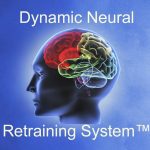
Best of the Phoenix Helix Podcast
In support of my own autoimmune health, I’m taking a sabbatical for the month of December and releasing two of my favorite episodes from the archives that you might have missed. Today’s episode is one of the most popular of all time. If you’re experiencing symptoms without a diagnosis, or symptoms that remain in spite of all the interventions you’ve tried, this episode is for you. DNRS stands for the Dynamic Neural Retraining System, and it’s a therapy based on neuroplasticity. This simply means that our brains change and adapt to life experiences, sometimes in positive ways, but other times in negative ones. With chronic illness, symptoms can actually become wired into our brains, even when the triggers for those symptoms are removed. DNRS is a therapy done at home, that rewires the brain (and body) for health. What types of conditions have been helped? Post-COVID syndrome, fibromyalgia, chronic fatigue syndrome, chronic Lyme disease, multiple chemical sensitivity, irritable bowel syndrome, mold toxicity, chronic inflammatory response syndrome, mast cell activation, food sensitivities, chronic pain, mental health issues, and more. What’s common about many of these conditions is that they are often called “mysterious illnesses”, meaning there’s no clear cause or effective treatment. In fact, many people have multiple diagnoses on this list, yet their symptoms remain. In this podcast, I speak with Annie Hopper, the creator of DNRS. She explains what this program is and how it works.
Listen to the Show
- Subscribe to my podcast through your favorite podcast app: iTunes, Stitcher, Google, TuneIn, Spotify, Amazon, etc.
- You can also listen to the episode right here through the player below, and if you subscribe to my newsletter you’ll get notified of future episodes.
Podcast: Play in new window | Download
Show Notes
- Intro (0:00)
- COVID-19 & DNRS (2:55)
- I chose this episode because it’s one of the most popular of all time AND it also applies to our lives in 2020. If you were infected with COVID-19 and are struggling with your recovery, DNRS may be able to help you. Whenever our body goes through trauma and/or chronic inflammation, our brains and bodies can get trapped in an inflammation cycle. DNRS is designed to break that cycle and rewire the brain and body for health.
- Thank You to Our Podcast Sponsor – ShopAIP (3:35)
- This podcast is airing during the December holiday season. If you’re looking for gifts, ShopAIP is a great choice. It’s a small business run by a woman with autoimmune disease. ShopAIP sells AIP gift bundles as well as gift certificates. For last minute gifts, gift certificates are sent by email and received immediately by the recipient. If you want to order it in advance of the holiday, enter your email address in the recipient line, and you can give it to your loved one on the holiday itself.
- ShopAIP is an online store dedicated to the Paleo Autoimmune Protocol. With hundreds of items for the elimination phase of the AIP, and new products labeled by reintroduction category as well. You can find protein bars, sauces and condiments, AIP-friendly spices, cooking and baking ingredients, delicious snacks, non-toxic skincare, and more.
- If you’re a first-time customer, use the code PHOENIX for 10% off your order. Purchase here.
- Meet Annie (5:06)
- Annie was living a healthy, happy, productive life. She had a successful career, a wonderful relationship, and was engaged in her community. Then, after being exposed to a series of intense body stressors (a car accident, mold exposure, and chemical exposure), she started to develop symptoms: insomnia, joint pain, chemical sensitivity, fibromyalgia, and eventually electric hypersensitivity. At her worst, if she walked down the street and someone in a neighboring house was doing laundry, the dryer exhaust could send her into convulsions. She began wearing a mask anytime she left home, which interfered with both her work and social life. Eventually, her home stopped being a safe space, because her body started to react to electricity as if it was life-threatening. For a while, she was forced to be homeless, not because of finances but due to her extreme sensitivities.
- DNRS was born out of her own research and experiments to heal, when doctors were unable to help her.
- Now, 10 years later, she has no symptoms. She travels around the world and speaks at conferences. While she chooses to keep her home as scent-free and chemical-free as possible, she’s no longer traumatized by exposures that happen simply by being in the world. She’s also no longer hypersensitive to electricity and can enjoy her home again.
- Defining Neuroplasticity & Limbic System Trauma (12:00)
- Neuroplasticity simply means that the brain is capable of change. This is a good thing – it allows us to learn and adapt. But the brain also changes with trauma, and trauma comes in many different forms: psychological, emotional, physical, chemical, viral, etc.
- The Limbic System contains a number of structures in the mid-brain that work together to assess threat vs. safety. It filters all the sensory and emotional information we receive and lets our body know when there’s danger. When this system isn’t functioning properly, it can keep the body in a chronic alarm state, reacting to smaller and smaller triggers as if they are life-threatening. DNRS is based on the theory that this is at the root of many mysterious illnesses. The DNRS techniques are designed to correct this dysfunction, allowing the brain to return to a state of rest, where healing can then take place bodywide.
- What is DNRS? (18:02)
- DNRS stands for the Dynamic Neural Retraining System. It’s a drug-free approach to alleviating the symptoms of chronic illness by rewiring the neural circuits of the limbic system. It’s a self-directed therapy designed to be done at home.
- DNRS includes 5 Pillars of Recovery:
- Pillar 1: Understanding that this is a brain impairment, that the brain is involved with your illness. Brain fog is a very common symptom with “mysterious illness.” But even when that’s not present, the brain interacts with the entire body, and brain dysfunction can cause symptoms bodywide.
- Pillar 2: Bringing awareness to pathways of the past (POPs) – psychological, emotional and behavioral patterns that might actually be expressions of the brain impairment. Learning to consciously identify these when they arise and use the DNRS techniques to redirect the brain to healthier patterns.
- Pillar 3: A set of daily exercises that include movement, speech, visualization and neural shaping, which work together to structurally and chemically change the brain.
- Pillar 4: Elevating your emotional state in a positive direction throughout the day. The goal is to counteract the negative bias and chronic threat response of the dysfunctional limbic system.
- Pillar 5: Practice. The exercises are practiced for 1 hour daily, along with ongoing application of the techniques throughout the day. It’s not an overnight fix, because it takes time to rewire the brain. The DNRS program is meant to be practiced for a minimum of 6 months.
- Learning DNRS (28:35)
- You can learn by yourself at home through a self-paced online course. The recommendation is to watch all the videos within 4 days if possible, but you can pace yourself based on health and energy levels.
- The in-person classes are held in locations throughout North America and Europe. They’re 5 days, with a maximum class size of 30 students. During the pandemic, these classes have been canceled, but there is a 12-week group coaching class which offers the same professional guidance and peer support of the in-person classes.
- There is also a private community forum as well as 1:1 coaching available.
- Are The Exercises Strenuous? (30:39)
- No. They do include some movement, but they can even be adapted for people who are bedridden. In that case, you visualize the movements from bed until you’ve improved enough to start doing the movements physically. And they are not strenuous movements.
- Thank You to Our Podcast Sponsor – Paleo on the Go (32:39)
- A frozen meal delivery service, 100% of their menu is compliant with the elimination phase of the paleo autoimmune protocol (AIP). They have over 5o items, including entrees, side dishes, broth, AIP-friendly bacon, and desserts.
- Use the code PHOENIX for 10% off your first order.
- How Does Rewiring the Brain Impact Health Elsewhere in the Body? (35:08)
- When the brain is stuck in a chronic fight or flight response, it shuts down everything it doesn’t see as vital. This is helpful in a short-term situation (being chased by a tiger), but harmful if it continues long-term. That’s because many of the body’s processes are controlled by the parasympathetic nervous system (the rest and digest system). That’s where digestion, healing, detoxification, repair, immune balancing, etc. all take place. When the body is in a chronic alarm state, all of those processes can become impaired. Also, the vagus nerve is a primary nerve of the parasympathetic nervous system which controls organ function. It receives direct communication from the brain regarding threat vs. safety and will suppress “non-vital” organ function during “threats”. Lastly, hormones are also thrown out of balance as stress hormones are over-produced.
- DNRS is designed to turn off this chronic fight or flight response, and when that happens, all of these systems are no longer suppressed and can start working optimally again. The body moves out of a state of survival and into a state of growth and repair, where healing can take place.
- What Results Can People Expect? (33:51 & 39:45)
- Because it takes time to rewire the brain for health, the DNRS program is designed to be done daily for a minimum of 6 months. However, some people do start to see improvements more quickly.
- As long as you are continuing to improve, DNRS can be continued longer than 6 months.
- If your symptoms disappear altogether, you don’t need to continue DNRS to maintain those improvements. The rewiring of the brain is permanent.
- Like any treatment, results vary. Some people see mild improvements, some see major improvements, and some become completely symptom-free.
- With neuroplasticity, healing isn’t linear, so it’s common to have symptoms go up and down before improvements become permanent.
- For Annie, she started to see improvements within the first few weeks. Her sense of smell started to normalize first, decreasing her sensitivity. She did experience symptoms increasing and decreasing before they disappeared altogether. She is now symptom-free and no longer does the DNRS exercises. However, it’s a tool in her toolbox, so if symptoms ever begin to return, she knows how to reverse them.
- Resource: DNRS Testimonials.
- Neuroplasticity Books and Research (46:50)
- Wired for Healing by Annie Hopper
- The Brain That Changes Itself by Dr. Norman Doidge
- Brain Lock: Free Yourself from OCD by Dr. Jeffery Schwartz
- The Tell-Tale Brain by V.S. Ramachandran
- My Stroke of Insight by Jill Bolte Taylor
- Neuroplasticity Research Articles
- DNRS Research Studies (50:35)
- McMaster University followed 100 participants with chronic illness who implemented the DNRS techniques for 1 year. Those study results were published in 2019 & showed significant improvements in health.
- The University of Calgary has a study currently ongoing with 100 participants with chronic fatigue, fibromyalgia, or chemical sensitivity. They are doing functional imaging to track brain changes in response to the DNRS techniques.
- Subscribe to the DNRS newsletter to be notified when the research results have been published.
- Outro (56:24)
- Visit the DNRS website to learn more about their program.
- Eileen (your podcast host) is the author of multiple books, written to help people thrive with autoimmune disease. Learn more on the Books Page.
- If you like this podcast, follow or subscribe through your favorite podcast app. You can also subscribe to Eileen’s biweekly newsletter.
- Check out the entire archive of podcast episodes.
You May Also Be Interested In
with Dr. Datis Kharrazian
Spreading the Word
If you like the podcast, please leave a positive review in iTunes. It would mean the world to me, and also helps others find the podcast. Here are some quick instructions using your iPhone:
- If you are already subscribed to my podcast: (1) Click the purple podcast icon. (2) At the bottom of the screen, click Library. (3) At the top of the screen, click Shows. (4) Click the Phoenix Helix podcast image. (5) Scroll down the page, and you’ll see Ratings and Reviews. Scroll down a little bit more and click on Write a Review. This will bring up the review screen. Tap 5 stars (if you love the podcast), and then click in the title box, and it will bring up the keyboard. Enter a title and short review. (6) Click Send in the upper right corner. (7) Thank you! Positive reviews give the podcast a higher search ranking in iTunes, helping people find it and letting them know it’s a quality podcast and worth their time to listen.
- If you haven’t subscribed to my podcast: (1) Click the purple podcast icon. (2) In the lower right corner, click the magnifying class. (3) Type Phoenix Helix in the search box. (4) Click the podcast cover in the Show list. (5) If you’d like to subscribe, click the + sign at the top of the screen. (6) To write a review, scroll down the page, and you’ll see Ratings and Reviews. Scroll down a little bit more and click on Write a Review. This will bring up the review screen. Tap 5 stars (if you love the podcast), and then click in the title box, and it will bring up the keyboard. Enter a title and short review. (7) Click Send in the upper right corner. (8) Thank you! Positive reviews give the podcast a higher search ranking in iTunes, helping people find it and letting them know it’s a quality podcast and worth their time to listen.







